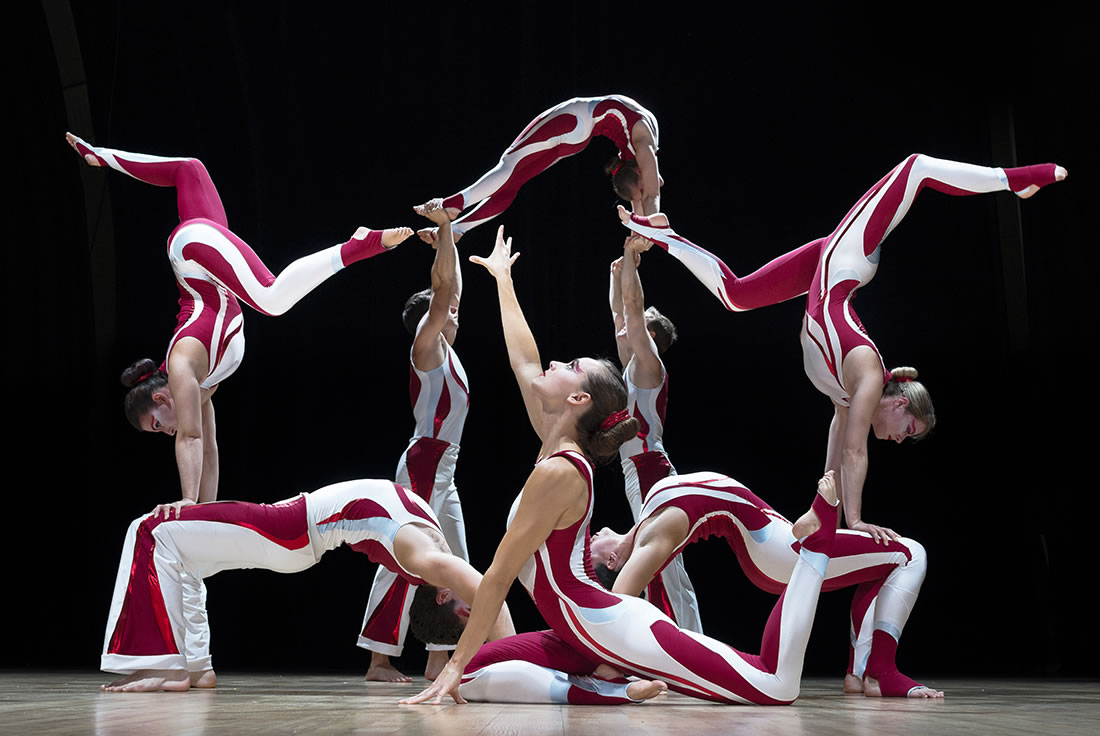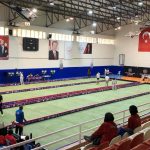Acrobatic arts is a performance discipline that combines elements of gymnastics, dance, theater, and circus arts . It emphasizes strength, flexibility, balance, coordination, and artistic expression to create visually stunning and physically demanding performances. Acrobatic arts can be performed individually, in pairs, or in groups, and often involve intricate choreography, lifts, throws, and balances.
Key Acrobatic Arts Sports:
- Acrobatic Gymnastics:
- A discipline that combines gymnastics and acrobatics, performed in pairs or groups. Routines include balances, throws, and dynamic movements, often set to music.
- Cheerleading:
- A team-based sport that incorporates acrobatics, dance, and stunts. Competitive cheerleading involves choreographed routines performed at events and competitions.
- Aerial Arts:
- Includes activities like aerial silks, aerial hoop (lyra), and trapeze, where performers execute acrobatic moves while suspended in the air.
- Parkour and Freerunning:
- While primarily focused on movement, these disciplines often incorporate acrobatic flips, spins, and tricks as practitioners navigate urban environments.
- Tumbling:
- A gymnastics discipline focused on acrobatic skills performed on a spring floor, such as flips, somersaults, and handsprings.
- Circus Arts:
- Includes a variety of acrobatic performances, such as acrobalance, hand balancing, and partner acrobatics, often seen in circus shows and festivals.
- Dance Acrobatics:
- Combines dance and acrobatics, with performers integrating flips, lifts, and balances into choreographed routines.
- Tricking:
- A hybrid sport that combines martial arts kicks, flips, and twists, creating visually stunning and dynamic movements.
- Pole Sports:
- Involves performing acrobatic moves on a vertical pole, combining strength, flexibility, and artistry. It is recognized as a competitive sport by the International Pole Sports Federation (IPSF).
- Capoeira:
- A Brazilian martial art that combines acrobatics, dance, and music, characterized by fluid movements and flips.
Reasons for Popularity in the Global Sports Market:
- Visual and Artistic Appeal:
- Acrobatic arts sports are highly visual and artistic, making them captivating for audiences. The combination of athleticism and creativity draws in fans and participants alike.
- Olympic and International Recognition:
- Some acrobatic arts sports, like acrobatic gymnastics and tumbling, are recognized by international sports federations and are part of major competitions, including the World Games and potentially the Olympics.
- Fitness and Skill Development:
- These sports promote physical fitness, including strength, flexibility, coordination, and balance, appealing to individuals seeking a full-body workout.
- Cultural and Historical Significance:
- Many acrobatic arts, such as circus arts and capoeira, have deep cultural roots and historical significance, adding to their appeal and global recognition.
- Media and Entertainment:
- Acrobatic arts sports are widely featured in movies, TV shows, and social media, increasing their visibility. Performances in circuses, talent shows, and live events also attract large audiences.
- Community and Inclusivity:
- Acrobatic arts sports foster a strong sense of community, with clubs, studios, and online forums bringing together enthusiasts. They are inclusive, catering to people of all ages and skill levels.
- Youth Appeal:
- Sports like cheerleading, parkour, and tricking resonate strongly with younger audiences due to their dynamic and exciting nature.
- Technological Integration:
- Advances in equipment, such as safety mats, aerial apparatus, and performance gear, enhance the experience and attract tech-savvy participants.
- Competitive and Recreational Balance:
- Acrobatic arts sports offer both competitive and recreational opportunities, catering to casual participants and elite athletes alike.
- Economic Impact:
- The popularity of acrobatic arts sports has led to the growth of related industries, such as training facilities, performance venues, and equipment manufacturers.
- Inspiration and Role Models:
- Acrobatic athletes and performers, such as Cirque du Soleil artists and competitive gymnasts, serve as role models, inspiring others to take up these sports.
- Global Competitions and Events:
- Organized competitions, such as the Acrobatic Gymnastics World Championships and cheerleading championships, bring these sports into the mainstream, attracting sponsorships and media coverage.
Economic Impact and Market Growth:
- Training Facilities: Gyms, studios, and training centers dedicated to acrobatic arts generate revenue through classes, workshops, and memberships.
- Event Hosting: Major competitions and performances attract participants and spectators, boosting local economies through travel, lodging, and dining.
- Equipment Sales: The market for acrobatic equipment, such as mats, poles, and aerial apparatus, is growing steadily.
- Media and Sponsorships: Major events and performances attract sponsorships from brands, further driving growth in the industry.
Conclusion:
Acrobatic arts sports are a vibrant and growing segment of the global sports market, driven by their visual appeal, artistic expression, and fitness benefits. Their ability to combine athleticism with creativity, along with strong community support and media exposure, ensures their continued popularity. As interest in unique and dynamic physical activities grows, acrobatic arts sports are likely to remain a key player in the global sports landscape















